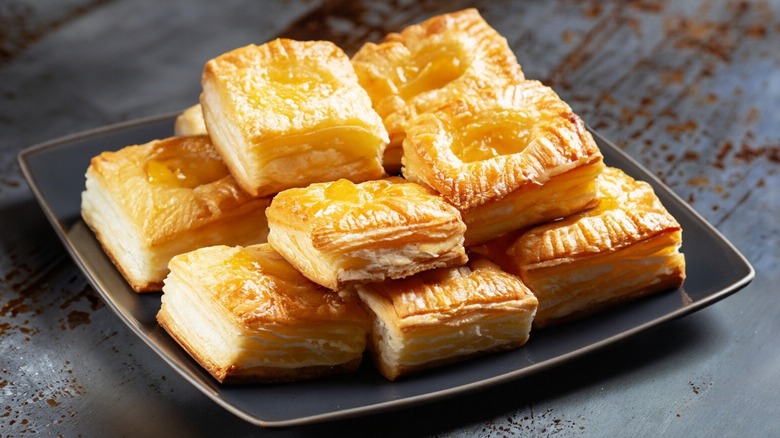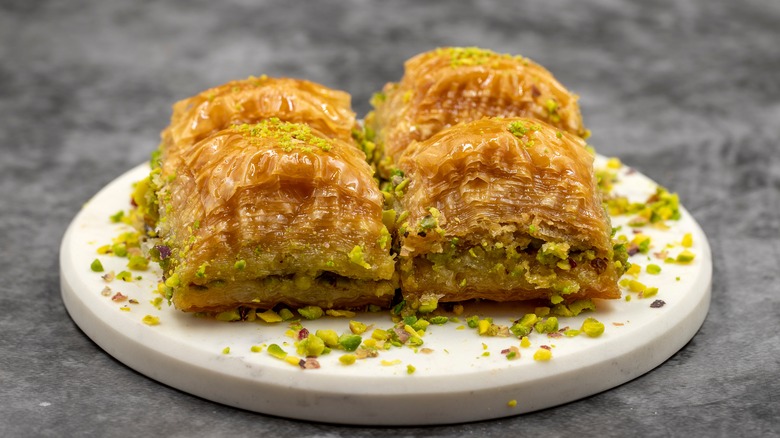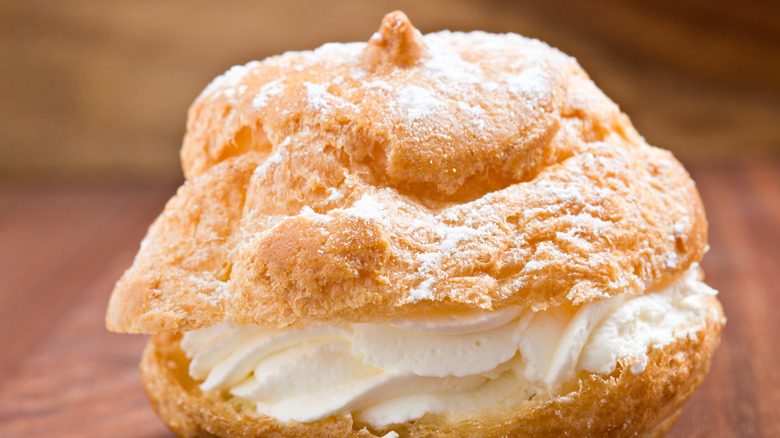No, Puff Pastry And Phyllo Dough Aren't The Same Thing
If you're preparing appetizers for a dinner party and want to make some Greek spiral spanakopita, the dough is incredibly important. If you don't have the traditional phyllo dough for the recipe, you might think you can grab a package of puff pastry from your freezer and use that instead. Yet, while these two buttery, flaky pastries are awfully similar, they're not the same thing and can't always be used interchangeably.
French-inspired puff pastry is made by placing butter inside of a simple dough, rolling it out, and then folding it over. Repeating this process numerous times will eventually create hundreds of individual layers within the dough. When the pastry is baked, its liquid evaporates and causes all those layers to puff up.
Phyllo dough, on the other hand, has its roots in the Balkans and the Middle East. It's not made by rolling out the dough, but by layering thin sheets of it on top of each other. These sheets are brushed with either butter or oil, which is yet another difference from puff pastry. Though, when baked, they also puff up into an airy pastry.
When to use each phyllo dough vs. puff pastry
The biggest difference between phyllo dough and puff pastry is the fat content. Puff pastry is packed with butter, while phyllo uses less butter or skips it completely in favor of oil. This creates different textures: Puff pastry has an airy interior with a crisped brown surface; phyllo's layers each become shatteringly crisp, giving you a crunchier but thinner texture. Their shapes will also differ as puff pastry will form a fairly thick final product that resembles a traditional pastry, while phyllo will remain thin.
Because of these differences, these ingredients are typically used for different dishes. Puff pastry's richer taste and more substantial shape makes it a perfect choice for desserts like Napoleons or appetizers like an onion tart. Phyllo should be turned to for recipes that require a thinner, flakier dough like in baklava or katmer.
Phyllo dough can also be made vegan, while butter-rich puff pastry never is. This makes phyllo a versatile alternative for plant-based cooking. If you're using store-bought phyllo, just check the ingredients to make sure it wasn't made using butter.
How to prepare your dough for cooking and baking
Both phyllo dough and puff pastry are labor-intensive and painstaking to make. Because of this, cooks often turn to store-bought, frozen dough instead of making it at home. The good news is that frozen puff pastry and phyllo dough can be just as great as homemade.
The pastries can usually be found in the freezer section of your local supermarket. You always want to buy puff pastry that's made with butter, rather than ingredients like shortening. Doughs made with butter will taste richer and have a flakier texture.
You can thaw the frozen dough overnight in the fridge, or at room temperature for about a half-hour. Just don't let it warm up too much, as the dough needs to remain cool to properly work with (but, if this happens, you can transfer it to the refrigerator to cool down and firm up).
Phyllo dough should never be defrosted at room temperature, as it will warm up too quickly. When this happens, the dough will become damp and gluey. Instead, defrost it in the fridge for the best results. Wait until the dough has completely defrosted before you separate its layers, and brush each layer down with oil or butter before baking for the best results.



